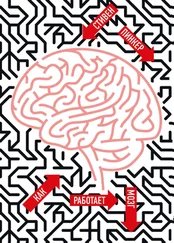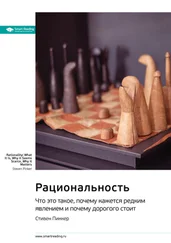Kleinfeld, J. 1999. MIT tarnishes its reputation with gender junk science (Special report www.uaf.edu/northern/mitstudy). Arlington, VA: Independent Women's Forum.
Klima, E., & Bellugi, U. 1979. The signs of language. Cambridge, Mass.: Harvard University Press.
Knauft, B. 1987. Reconsidering violence in simple human societies. Current Anthropology, 28, 457–500.
Koestler, A. 1959. The sleepwalkers: A history of man's changing vision of the universe. London: Penguin.
Komar, B., Malamid, A., & Wypijewski, J. 1997. Painting by numbers: Komar and Melamid's scientific guide to art. New York: Farrar, Straus & Giroux.
Kors, A. C., & Silverglate, H. A. 1998. The shadow university: The betrayal of liberty on America's campuses. New York: Free Press.
Kosof, A. 1996. Living in two worlds: The immigrant children's experience. New York: Twenty-First Century Books.
Kosslyn, S. M. 1980. Image and mind. Cambridge, Mass.: Harvard University Press. Kosslyn, S. M. 1994. Image and brain: The resolution of the imagery debate. Cambridge, Mass.: MIT Press.
Krebs, D., & Denton, K. 1997. Social illusions and self-deception: the evolution of biases in person perception. In J. A. Simpson & D. T. Kenrick (Eds.), Evolutionary social psychology. Mahwah, N. J.: Erlbaum.
Krebs, D. L. 1998. The evolution of moral behaviors. In C. Crawford & D. L. Krebs (Eds.), Handbook of evolutionary psychology: Ideas, issues, and applications. Mahwah, N. J.: Erlbaum.
Krech, S. 1994. Genocide in tribal society. Nature, 371, 14–15.
Krech, S. 1999. The ecological Indian: Myth and history. New York: Norton. Krubitzer, L., & Huffman, K. J. 2000. Arealization of the neocortex in mammals: Genetic and epigenetic contributions to the phenotype. Brain, Behavior, and Evolution, 55, 322–335.
Krueger, R. F., Hicks, B. M., & McGue, M. 2001. Altruism and antisocial behavior: Independent tendencies, unique personality correlates, distinct etiologies. Psychological Science, 12, 397–402.
Kubovy, M. 1981. Concurrent pitch segregation and the theory of indispensable attributes. In M. Kubovy & J. Pomerantz (Eds.), Perceptual organization. Mahwah, N. J.: Erlbaum.
Kubovy, M. 1986. The psychology of perspective and Renaissance art. New York: Cambridge University Press.
Lachter, J., & Bever, T. G. 1988. The relation between linguistic structure and associative theories of language learning-A constructive critique of some connectionist learning models. Cognition, 28, 195–247.
Lai, C. S. L., Fisher, S. E., Hurst, J. A., Vargha-Khadem, F., & Monaco, A. P. 2001. A novel forkhead-domain gene is mutated in a severe speech and language disorder. Nature, 413, 519–523.
Lakoff, G. 1996. Moral politics: What conservatives know that liberals don't. Chicago: University of Chicago Press.
Lakoff, G., & Johnson, M. 1980. Metaphors we live by. Chicago: University of Chicago Press.
Lakoff, G., & Nunez, R. E. 2000. Where mathematics comes from: How the embodied mind brings mathematics into being. New York: Basic Books.
Lalumière, M. L., Harris, G. T., & Rice, M. E. 2001. Psychopathy and developmental instability. Evolution and Human Behavior, 22, 75–92.
Lander, E. S., Patrinos, A., Morgan, J. J., & International Human Genome Sequencing Consortium. 2001. Intitial sequencing and analysis of the human genome. Nature, 409, 813–958.
Latané, B., & Nida, S. 1981. Ten years of research on group size and helping. Psychological Bulletin, 89, 308–324.
Laubichler, M. D. 1999. Frankenstein in the land of Dichter and Denker. Science, 286, 1859–1860.
Lazarus, R. S. 1991. Emotion and adaptation. New York: Oxford University Press.
Lee, Y.-T., Jussim, L. J., & McCauley, C. R. (Eds.) 1995. Stereotype accuracy: Toward appreciating group differences. Washington, DC: American Psychological Association.
Lehman, D. 1992. Signs of the times: Deconstructionism and the fall of Paul de Man. New York: Simon & Schuster.
Lehrman, K. 1997. The lipstick proviso: Women, sex, and power in the real world. New York: Doubleday.
Leibniz, G. W. 1768/1996. New essays on human understanding (Remnant, P. Bennett, J., Trans.). New York: Cambridge University Press.
Lerdahl, F., & Jackendoff, R. 1983. A generative theory of tonal music. Cambridge, Mass.: MIT Press.
Lesch, K.-P., Bengel, D., Heils, A., Sabol, S. Z., Greenberg, B. D., Petri, S., Benjamin, J., Muller, C. R., Hamer, D. H., & Murphy, D. L. 1996. Association of anxiety-related traits with a polymorphism in the serotonin transporter gene regulatory region. Science, 274, 1527–1531.
Leslie, A. M. 1994. ToMM, ToBY, and agency: Core architecture and domain specificity. In L. A. Hirschfeld & S. A. Gelman (Eds.), Mapping the mind: Domain specificity in cognition and culture. New York: Cambridge University Press.
Leslie, A. M. 1995. Pretending and believing: Issues in the theory of ToMM. Cognition, 50, 193–220.
LeVay, S. 1993. The sexual brain. Cambridge, Mass.: MIT Press.
Levins, R., & Lewontin, R. C. 1985. The dialectical biologist. Cambridge, Mass.: Harvard University Press.
Levitt, P. 2000. Molecular determinants of regionalization of the forebrain and cerebral cortex. In M. S. Gazzaniga (Ed.), The new cognitive neurosciences. Cambridge, Mass.: MIT Press.
Lewis, H. W. 1990. Technological risk. New York: Norton.
Lewontin, R. 1990. How much did the brain have to change for speech? (Commentary on Pinker & Bloom's "Natural language and natural selection"). Behavioral and Brain Sciences, 13, 740–741.
Lewontin, R. 1992. Biology as ideology: The doctrine of DNA. New York: HarperCollins.
Lewontin, R. C. 1982. Human diversity. San Francisco: Scientific American.
Lewontin, R. C. 1983. The organism as the subject and object of evolution. Scientia, 118, 65–82.
Lewontin, R. C., Rose, S., & Kamin, L. J. 1984. Not in our genes. New York: Pantheon.
Lingua Franca, Editors of. 2000. The Sokal hoax: The sham that shook the academy.
Lincoln: Unviersity of Nebraska Press.
Lockard, J. S., & Paulhaus, D. L. (Eds.) 1988. Self-deception: An adaptive mechanism. Englewood Cliffs, N. J.: Prentice Hall.
Locke, J. 1690/1947. An essay concerning human understanding. New York: E. P. Dutton.
Loehlin, J. C. 1992. Genes and environment in personality development. Newbury Park, Calif.: Sage.
Loehlin, J. C. 2001. Behavior genetics and parenting theory. American Psychologist, 56, 169–170.
Loehlin, J. C., & Nichols, R. C. 1976. Heredity, environment, and personality: A study of 850 sets of twins. Austin: University of Texas Press.
Loury, G. 2002. The Anatomy of racial inequality: Stereotypes, stigma, and the elusive quest for racial justice in the United States. Cambridge, Mass.: Harvard University Press.
Lubinski, D., & Benbow, C. 1992. Gender differences in abilities and preferences among the gifted: Implications for the math-science pipeline. Current Directions in Psychological Science, 1, 61–66.
Lumsden, C., & Wilson, E. O. 1981. Genes, mind, and culture. Cambridge, Mass.: Harvard University Press.
Lutz, D. 1984. The relative influence of European writers on late eighteenth-century American political thought. American Political Science Review, 78, 189–197. Lykken, D. T. 1995. The antisocial personalities. Mahwah, N. J.: Erlbaum.
Lykken, D. T. 2000. The causes and costs of crime and a controversial cure. Journal of Personality, 68, 559–605.
Lykken, D. T., McGue, M., Tellegen, A., & Bouchard, T. J., Jr. 1992. Emergenesis: Genetic traits that may not run in families. American Psychologist, 47, 1565–1577.
Lytton, H. 1990. Child effects-Still unwelcome? Response to Dogge and Wahler. Developmental Psychology, 26, 705–709.
Lytton, H., & Romney, D. M. 1991. Parents' differential socialization of boys and girls: A meta-analysis. Psychological Bulletin, 109, 267–296.
Читать дальше
Конец ознакомительного отрывка
Купить книгу











